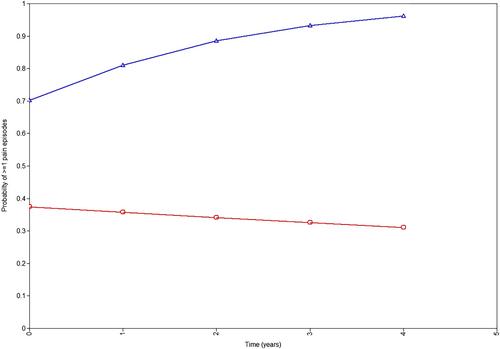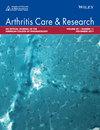Shoulder Symptom Trajectories Over Four Years: Data From a Longitudinal Study on Osteoarthritis
Abstract
Objective
Limited data exist on the natural history of shoulder symptoms. We aimed to describe longitudinal patterns of shoulder symptoms and determine risk factors for incidence and persistence.
Methods
Data from Osteoarthritis Initiative participants observed annually for four years were used to describe shoulder symptom (yes/no, side) incidence and prevalence using descriptive analyses. Regression analyses investigated the association among three shoulder symptoms outcomes (persistent, incident, and intermittent) and clinical factors. Latent class growth analysis (LCGA) identified trajectories in those reporting pain at one or more time point.
Results
In total, 4,796 participants (58% women, mean age 61.2 years) were included. Baseline shoulder symptom prevalence was 22%; 32% of these reported bilateral symptoms. In those reporting right symptoms, 260 of 1,886 (14%) had persistent symptoms. Those with persistent symptoms had worse baseline and four-year clinical status (poorer function, mental health, and quality of life). In regression analysis, persistent symptoms were associated with sleep disturbance (adjusted odds ratio [aOR] 1.97, 95% confidence interval [95% CI] 1.49–2.62), work absenteeism (aOR 2.16, 95% CI 1.38–2.62), lower limb weakness (aOR 1.76, 95% CI 1.37–2.27), multiple-site joint symptoms (≥3 joints excluding shoulders) (aOR 4.90, 95% CI 2.79–8.58) and White race (aOR 1.39, 95% CI 1.04–1.88). Lower limb weakness was also associated with incident symptoms; no variables were associated with intermittent symptoms. LCGA identified two trajectories: the trajectory with high probability for symptoms (9% of LCGA analysis cohort) showed similar relationships to clinical variables as in the persistent symptoms group.
Conclusion
In this large, four-year study, persistent shoulder symptoms were common and associated with worse clinical outcomes. At least one risk factor for incident symptoms is modifiable.



 求助内容:
求助内容: 应助结果提醒方式:
应助结果提醒方式:


